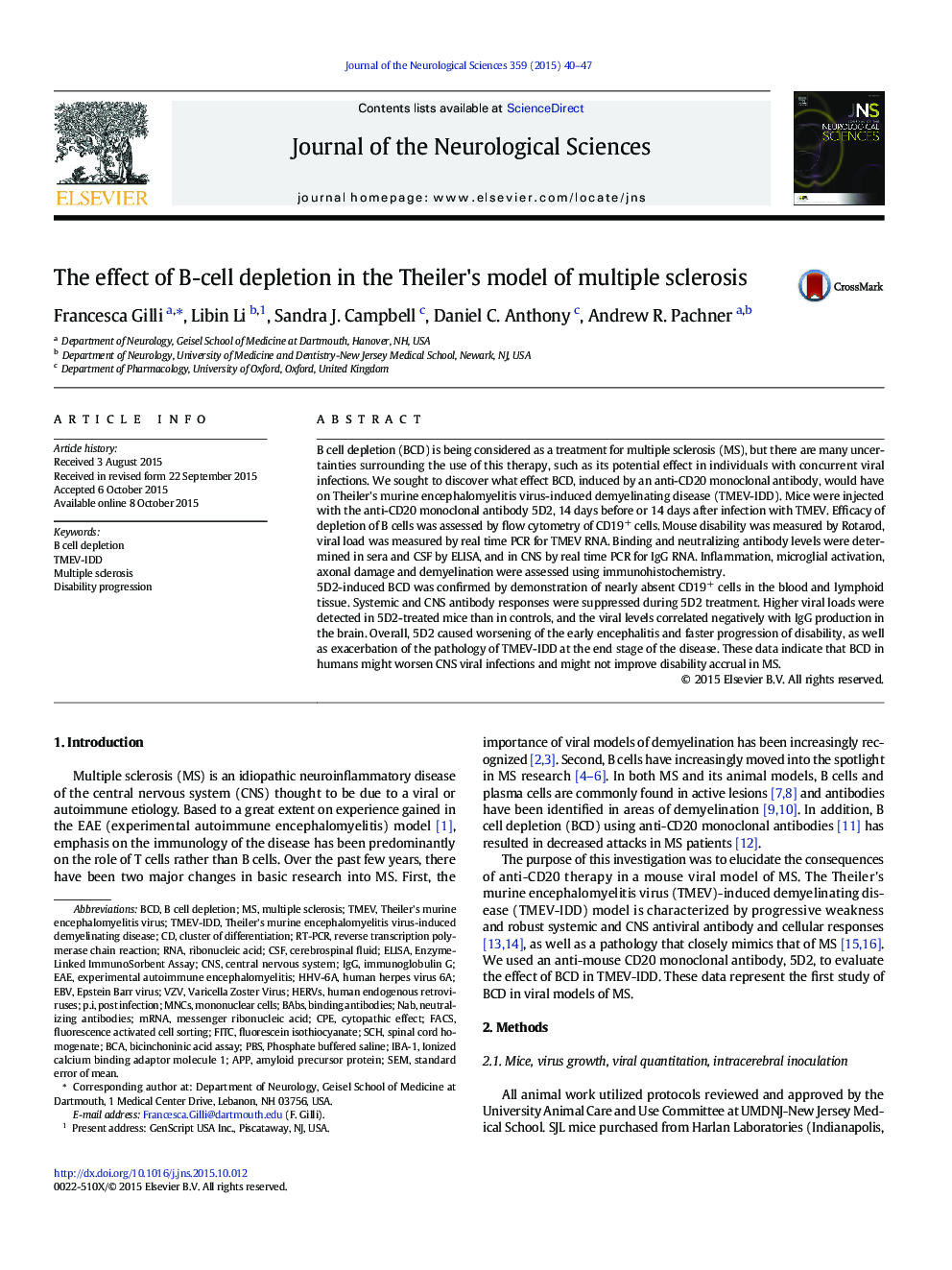| Article ID | Journal | Published Year | Pages | File Type |
|---|---|---|---|---|
| 8275114 | Journal of the Neurological Sciences | 2015 | 8 Pages |
Abstract
5D2-induced BCD was confirmed by demonstration of nearly absent CD19+ cells in the blood and lymphoid tissue. Systemic and CNS antibody responses were suppressed during 5D2 treatment. Higher viral loads were detected in 5D2-treated mice than in controls, and the viral levels correlated negatively with IgG production in the brain. Overall, 5D2 caused worsening of the early encephalitis and faster progression of disability, as well as exacerbation of the pathology of TMEV-IDD at the end stage of the disease. These data indicate that BCD in humans might worsen CNS viral infections and might not improve disability accrual in MS.
Keywords
CPEVZVRT-PCRBCABCDNaBAPPEAEMNCsmRNAFITCIgGTMEVp.iTMEV-IDDFACSHERVsPBSHHV-6AIba-1bicinchoninic acid assayBinding antibodiesNeutralizing antibodiesexperimental autoimmune encephalomyelitisCytopathic effectSCHRNAribonucleic acidEBVimmunoglobulin GBABSB cell depletionELISAEnzyme-linked immunosorbent assaystandard error of meancluster of differentiationCNSHuman endogenous retrovirusesmessenger ribonucleic acidMononuclear cellscentral nervous systempost infectionPhosphate buffered salinefluorescein isothiocyanatefluorescence activated cell sortingCSFCerebrospinal fluidSEMMultiple sclerosisionized calcium binding adaptor molecule 1reverse transcription polymerase chain reactionTheiler's murine encephalomyelitis virusEpstein barr virusVaricella zoster virusamyloid precursor proteinDisability progression
Related Topics
Life Sciences
Biochemistry, Genetics and Molecular Biology
Ageing
Authors
Francesca Gilli, Libin Li, Sandra J. Campbell, Daniel C. Anthony, Andrew R. Pachner,
